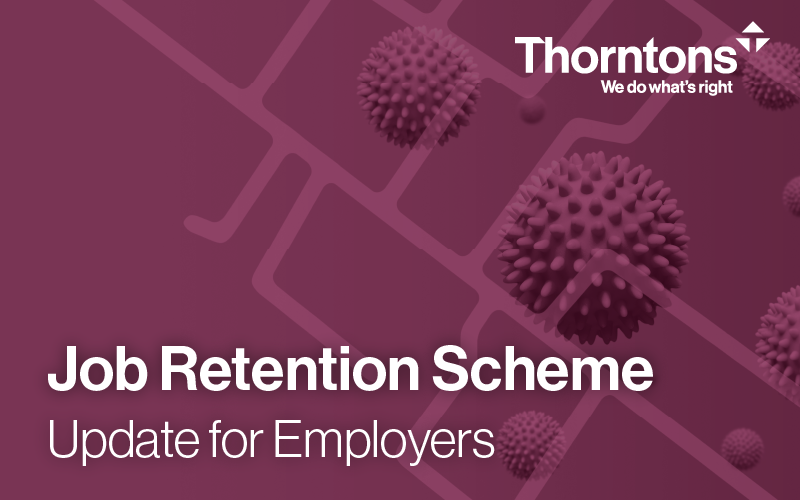
It has been a rollercoaster week for the Coronavirus Job Retention Scheme (CJRS). Initially planned to end on 31 October 2020, at which point the planned Job Support Scheme was to be implemented, the Government announced last weekend that in view of the return to a full lockdown in parts of the UK, the CJRS would remain open an extra month. Fast forward to Thursday 5 November and that extra month was extended even further with the Chancellor announcing that the CJRS will be available until 31 March 2021. The Job Support Scheme and Retention Bonus have accordingly been postponed until further notice.
Below we discuss the changes and answer key questions about the latest iteration of the scheme.
What guidance has been published about the extended CJRS?
The full guidance on the extended CJRS is due to be published on 10 November 2020. Until then, the basic framework of the scheme has been set out in an HMRC Policy Paper, available here. This provides a broad overview of the new rules but requires clarification from more detailed guidance.
Does the extended CJRS apply in Scotland?
Yes. The territorial scope of the extension to the CJRS has caused significant confusion given that, at present, only England has returned to a full lockdown. The Policy Paper confirms that the extension applies to employers “across the UK” so eligible Scottish businesses can apply.
What employers are eligible under the extension?
The extension is not limited to employers who have used the CJRS before and eligibility does not require the business to be completely closed. The previous eligibility criteria for employers will apply i.e. employers must have a UK bank account and PAYE scheme to claim.
What employees are eligible under the extension?
Crucially, the extended CJRS is not limited to employees who have been on furlough before. Employers can claim for employees on any type of contract, whether previously furloughed or not, provided:
- They were on the employer’s PAYE payroll on 30 October 2020; and
- The employer made a PAYE RTI submission to HMRC for them between 20 March 2020 and 30 October 2020.
The Policy Paper also allows employees to bring back staff who have been made redundant or stopped working after 23 September 2020. In that situation, the employer must have made an RTI submission between 20 March 2020 and 23 September 2020 in order to claim under the scheme.
Does the extension allow for both “full” and “flexible” furlough?
Yes. The extended CJRS is reverting to the scheme format from August 2020. This means that employers can choose whether to keep staff on furlough full time or bring them back for part of their hours and claim for any usual hours not worked. Flexible furlough allows employers to bring employees back for any amount of time on any work pattern, provided the employee agrees to this.
What can employers claim?
The reimbursement available under the extended CJRS is reverting to the claim amounts available in August 2020. This means:
- Employers must pay full contractual pay for any hours the employee works;
- Any portion of the employee’s usual hours that are not worked will be furloughed hours. These can be claimed under the CJRS at a rate of 80% of the employee’s reference salary capped at £2,500 per month.
- Employers must pay pension and national insurance contributions for both worked and furloughed hours. Unlike the early version of the CJRS, these are not recoverable under the scheme.
As before, employers can choose to top up the 80% claimed for unworked hours to 100%, at their own discretion. All sums claims under the CJRS must be paid to the employee.
The reimbursement amount of 80% up to £2,500 will remain in place until 31 January 2021 and will be reviewed. The government has yet to announce what will happen after this date although we know the extension is due to remain in place until the end of March so the unknown is whether the 80% will remain or reduce with employers being required to contribute more than just NI and pension contributions.
Will the calculation of reference salary and usual hours remain the same under the extension?
It depends on whether the employee was eligible for furlough before.
If the employee was eligible for furlough under the old scheme (i.e. an RTI submission was made to HMRC in respect of them by 19 March 2020), the calculation of reference salary and usual hours used in August 2020 will apply. The employee, even if previously eligible, does not have to have actually been placed on furlough before for this calculation to apply. For those who were on furlough before, the calculations will not change from the old version of the CJRS.
For employees who were not previously eligible for furlough or who were hired between 20 March and 30 October 2020, a new calculation for reference salary and usual hours will apply:
- For those on fixed pay:
- Reference salary will be based on the pay period ending on or before 30 October 2020.
- Usual hours will be based on the contracted hours worked in the pay period ending on or before 30 October 2020.
- For those on variable pay:
- Reference salary will be based on their average earnings from the 2020/21 tax year up to the start date of furlough.
- Usual hours will be based on the average hours worked between the start date of the 2020/21 tax year (6 April) and the day before their CJRS extension period begins.
What is and is not included for reference salary purposes will remain the same under the extension as under the previous CJRS. Further guidance is urgently required to clarify how these new calculations will work in practice.
Do the same CJRS rules regarding annual leave apply?
This has not been confirmed yet. However, it is expected to be the same as in August 2020. This means employers should be able to claim back 80% (up to £2,500) for annual leave taken during periods of furlough.
Annual leave will continue to accrue as normal during furlough so employees should ensure annual leave is being taken at regular intervals to avoid holidays being lost.
Do we need to write to employees again to get their approval to go on furlough under the extension?
Like the previous CJRS, employers must seek written agreement from any staff member they want to place on furlough. The usual rules regarding contractual variation, equality and discrimination all apply.
Many employers will have already written to staff with arrangements for placing them on the Job Support Scheme (JSS) and in many cases this may have been stated to be “until further notice”. However given the fast pace at which this has all happened, and many employers had already written to employees to seek their agreement to put them on the JSS, we strongly recommend issuing a further letter to explain that the JSS has been postponed, and to seek the employee’s approval to be placed on furlough under the CJRS instead. Any working pattern proposed under the JSS can be recycled under the CJRS, but it is worth bearing in mind that the minimum requirement to have employees doing 20% of their normal working hours under the JSS does not apply to the CJRS.
For furlough periods starting on 1 November 2020, HMRC have confirmed that they will accept retrospective furlough agreements provided this is in place by 13 November 2020.
Further guidance is anticipated the day before to clarify the policy overview. Please continue sign up to our mailing list for future employment law and business updates.
For more information contact Chris on 03330 430350.
